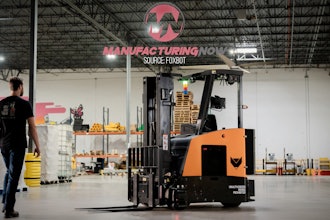There are a number of factors impacting the performance of our national electric grid, ranging from uncontrollable and extreme natural occurrences like floods, hurricanes and wildfires, to shifting user dynamics like renewable energy and electric vehicles.
The common thread buried within each of these situations is that they challenge the overall performance and reliability of our electrical power supply.
Adding to these concerns is a focus on developing an exponentially larger national fleet of electric vehicles for both consumer and commercial use – making grid reliability an even more significant business continuity, consumer safety and supply chain concern. The EV situation is about more than just having enough charging stations, but ensuring those stations have enough power.
The surging needs of manufacturers also stems from the growth of digital transformation strategies focused on advanced automation, artificial intelligence and robotics. All of these efficiency-focused investments reinforce a need for reliable and uninterrupted power. And the vulnerabilities don’t stop with keeping these machines powered-up - when a power loss takes them off-line, these platforms become susceptible to cyberattacks.
Currently, the primary back-up power supply is realized in the form of diesel fuel-powered generators. And while they keep the business up and running, they fly in the face of many sustainability goals. Grid reliability challenges, emissions reduction strategies and a stronger reliance on electrical power have led many policymakers and industry leaders to seek alternatives to diesel generators for backup power.
One of these potential solutions is a dual purpose microgrid.
A microgrid is basically a local power system that can serve as a back-up power supply in the case of an outage, while also providing revenue-generating power services to the larger grid when not being utilized at the local level. Microgrids come in many forms and utilize a variety of distributed energy resource (DER) technologies. The more modular and standard the solution, the lower the cost to own and operate.
A microgrid is, simply put, a small, self-sufficient grid. Some types of microgrids provide resilience by serving load locally. If portions of the power grid are temporarily turned off to prevent wildfires or if a transmission line is taken offline during a hurricane, microgrids “downstream” of those interruptions continue to keep the lights on by providing power from local resources.
Guidehouse Insights anticipates that, over the next decade, the industrial market will emerge as one of the fastest growing markets for microgrids for a number of reasons. (watch the video for more details)
Each microgrid can be a unique, customized energy system of any size, made up of a diversity of available DER assets. Though this intense customization is one of the microgrid platform’s strongest selling points, there are also downsides to this approach – namely time and money. So, an alternative approach has also been championed that involves standardizing microgrid assets so they can be assembled like Lego blocks - lowering design and deployment costs.
Here, we’ll discuss four microgrid options that are often considered as the leading alternatives to diesel generators. (watch the video for more details)
The concepts covered here are but a portion of the resources offered by Enchanted Rock relative to microgrid applications, investments and trends. For more information, go to enchantedrock.com or download some of the company’s additional information assets listed on this page.






















